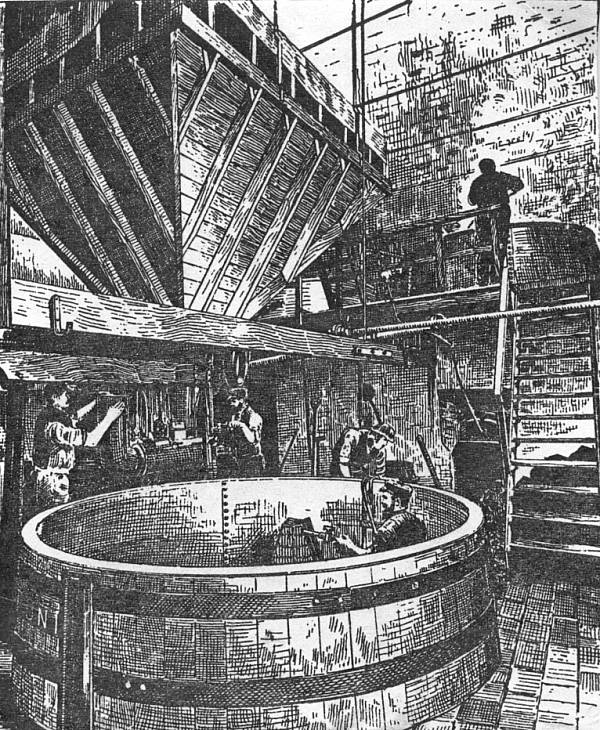



This is the first of a three-part story about our trip to Yakima to tour an organic hop farm and why that's a big deal.
Last fall, we met with Brad and Craig Carpenter, the sixth generation of the oldest hop growing family in WA, and Ron Britt, their entomologist and pest-control czar. The Carpenters are also one of several families who own Yakima Chief, the major hops processor. They approached us because they were considering a new venture: an organic hop farm on Britt’s family property in Cowiche Canyon, just outside Yakima. But they wanted to spec out potential demand among Seattle microbreweries and they targeted us because of all our high-fallutin talk of sustainability on our website. (I posted about meeting them on Dec. 1, 2009)
Encouraged by our interest and the growing demand for organic hops in the craft brewing industry in general, they wasted no time and planted a half-acre of Simcoe and Citra hops. (We've featured both Simcoe and Citra in our cask IPA's.) They also formed the American Organic Hop Growers Association, comprised of a handful of other hop growers who are dedicating portions of their land to organic production. Last weekend, the whole gang here went to tour the bines and meet with Brad Carpenter, Ron and Kathie Britt and their sons Reed and Nathan, and Jason Perrault, Vice President of Select Botanicals and the actual, real-life creator of the Simcoe variety, among many other strains of organic (and conventional) hops. He’s pretty much a rock star in the beer world – google him. Videographer and Fremont Brewing fan Greg Young (aka @CoolGuyGreg), volunteered his time and expertise to video the history-in-the-making gathering. [And no, for once that was not a typo: they’re called “bines” because they’re not “vines” – hops climb and cling by little hairs instead of by tendrils as do vines – see, ya learn something every day.]
Cowiche Canyon, about six miles northwest of Yakima, is a stunning, basalt-lined canyon that frames the lush, winding Cowiche Creek, home to a remnant run of Coho salmon and several hundred species of trees, shrubs, and wildflowers, including the rare Tauschia hooveri, found only there. So pristine and unique is this riparian oasis in the middle of the arid shrub-steppe surrounding it that the Cowiche Canyon Conservancy was formed in 1985 to preserve and protect it. Among the Conservancy’s many projects is to acquire and restore enough parcels of private and public land to the west of the canyon to build an 80-mile long trail from its mouth all the way to Mt. Rainier. (!) I know all this because its Executive Director, Betsy Bloomfield, came to the gathering to meet everyone and educate us on what the Conservancy is doing in the hops' backyard.
The Carpenters and Britts decided to locate their organic hop experiment there because, a) the Britts already owned the land, it having been in the family for 25 years and, b) because its isolation from any other hop fields will protect the plants from cross-fertilization by air-borne spores. But beyond these practical reasons, the Britts are committed to showing that agricultural uses can co-exist with conservation efforts, that it doesn’t have to be farmers vs. nature-freaks (of whom I am one, I guess). Indeed, since they’re farming organically, they’re not dumping a bunch of nasty chemicals into the creek, proving that farmers can be stewards and not mere extractors of the land.
I’ll close on that high-minded note. Next: the politics and economics of organic hops and AOHGA’s Grand Plan.
In these photos: The group shot is Ron Britt, Kathie Britt, Brad Carpenter (sitting), Matt Lincecum, and Betsy Bloomfield showing a map of Cowiche Canyon (the woman whose back is to the camera is Janet, a Britt family friend). Missing from the shot is Jeano who, with Kathie, made us the most amazing BBQ lunch. The guy standing in front of the hops is said rock-star horticulturalist Jason Perrault. The pic of the bines is courtesy of Brad Carpenter, taken July 19, 2010 (note the basalt towers in the background).






































